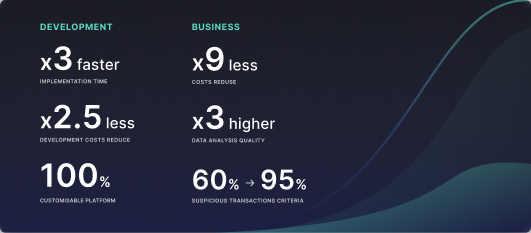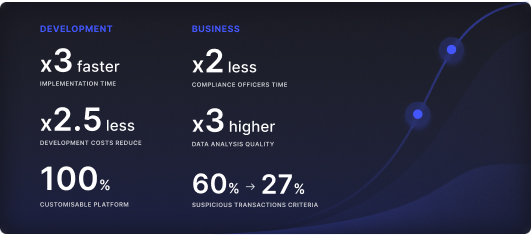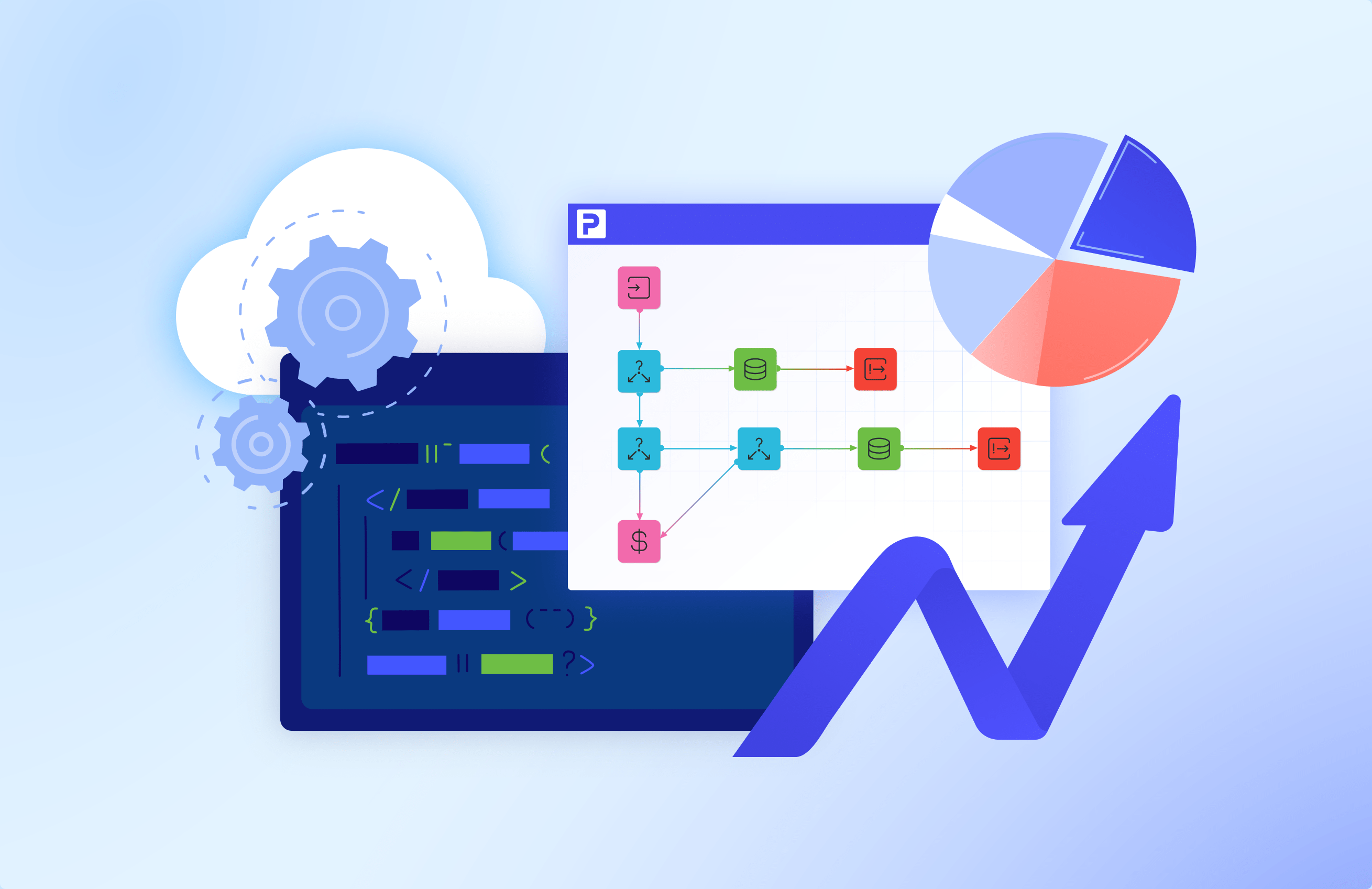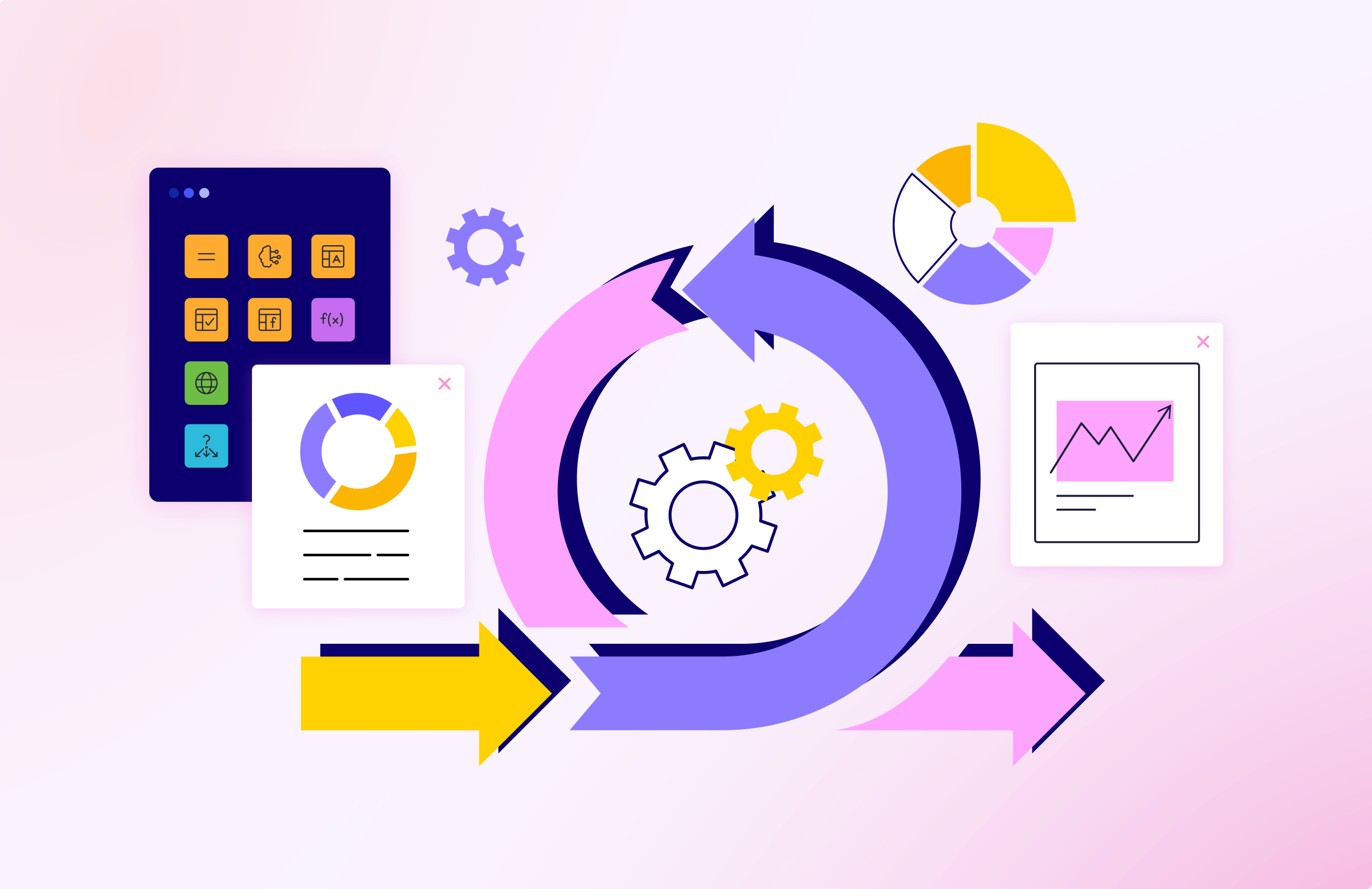How Low-code Platforms are Revolutionizing Banking Application Development


Financial software is the staple upon which the global economy is built. Since the first online banking app appeared in 1991, banks have been adopting digital services at a rapid pace. Along with the technology, customers have been including more online service requirements. And here we are in 2023. 89% of recent McKinsey report respondents use at least one payment service daily. At the same time, 54% of digital wallet users are likely to expect the service from their bank.

For banks, the digital transformation process is never ending. They develop an app, then modernize it as innovations pop up, and repeat. But, with traditional software development methods, it’s become hard to catch up with the sector’s innovators.
According to Gartner, the demand for software has outgrown the capacity of developers to produce it. That’s why bankers and other businesses turn to low-code development. It is the fastest way to build financial applications and services. Microsoft anticipated 450 million of 500 million apps to be created in the next 5 years and will be designed on low-code and no-code platforms.
In this article, you’ll discover how you can use low-code platforms to develop your banking applications fast and with a reasonable budget.
What is low-code?
Low-code refers to a visual development approach combined with manual development capabilities. Low-code platforms offer a convenient visual development environment with pre-made code components. The components work for different banking app functionalities. Users can compile apps by dragging and dropping them on a low-code development environment.
The ease of use allows citizen developers to build through the whole app creation cycle including app integration, testing, and deployment in the cloud or on-premises. It’s certainly true — sophisticated law-code banking apps require custom features and code components. Therefore, for the majority of banking apps, the input of professional developers will be a must.
Why low-code is a game-changer in banking software development?
A great deal of low-code productivity lies in improved CI/CD processes. In a low-code platform, developers and domain experts can collaborate through the IDE (Integrated Development Environment). The IDE allows both parties to be on the same page at every stage of app’s development. Because of this, bank managers can control the integration of the business strategy into the apps.
Low-code apps are easy to integrate with various databases, 3r’d party services, and other banking applications through APIs (REST, SOAP, etc.). The integration process can literally take minutes. In addition, low-code includes testing tools that automatically check the app flow before deployment. Low-code platforms offer immediate deployment options including cloud (AWS, etc.) and, sometimes, on-premises.
Another important trait that has made the low-code approach a disruptor in FinTech development is its AI/ML capabilities. AI/ML technologies enable banking software developers to create automation and support tools.
And last but not least is the ease of use that reduces the IT department’s involvement in software maintenance. After short low-code development training, non-IT employees can learn to alter the parameters of applications. Eventually, banks will be able to reduce IT operational budgets, or redirect them to more intense projects, and facilitate response to strategy changes.
Types of banking apps you can build with low-code
Low-code platforms allow businesses to produce many types of banking applications. The variety of such apps depends on the low-code platform’s specific features. For instance, there are back-end and front-end low-code development platforms. The back-end low-code platforms offer the components for functionalities whereas front-end ones are for data presentation and interaction. Here are some examples of software you can create using a front-end or a back-end low-code platform:
Client-side applications
Online banking applications with evolved customer profiles. Low-code banking apps for customers allow users to register a bank account, make transactions, participate in bank promotions, apply for loans, and more.
Lending automation
Low-code loan automation tools to get connected to client-side apps or bank websites to perform loan origination, granting, and repayment control with little human involvement. Low-code platforms enable such tools with AI/ML and RPA capabilities that allow the bank to reduce loan processing cycles and reduce risks. Low-code lending automation applications are able to automate borrower scoring and credit decision-making based on data from multiple sources.
Omnichannel support applications
Smart bank assistance is part of the bank’s website or customer application. Low-code banking support bots can answer frequently asked questions. To do that, the assistant takes info from internal resources. If a customer needs some type of service, it redirects them to a particular specialist.
Risk management tools
Banking low-code apps for risk management make risk evaluation considering the data from multiple sources (e.g. social media, personal info, etc.). AI-powered low-code apps evoke sources to derive the information on client demographics, credit history, social status, and other factors relevant to risk assessment.
Fraud detection apps
With a low-code platform, users can create fraud detection software. This type of low-code app spots suspicious actions, false personal information of customers, and restricted transactions. These practices also have to do with the business rules management engines that set the metrics for AI to compare the data against.
Internal operations
Low-code applications can improve internal banking operations with cross-department collaboration tools, automated task assignment, and data management.
Benefits of banking app development with low-code
Faster innovation adoption
Low-code platforms make software development faster and easier. Applied to the FinTech field, they facilitate the development of new automation tools and integration of state-of-art banking digital practices. Even when a solution demands professional development, the process will be much faster due to the low-code productivity and testing tools.
lower development risks
It is difficult to spoil a low-code banking app development as the majority of code is delivered as clean pre-made graphic components. At the same time, custom code parts of the app get AI-powered quality assurance testing at each stage of its development. In other words, a low-code platform will spot any code inconsistency and won’t let developers proceed to deployment before a bug is fixed.
Additionally, the tight collaboration of domain experts and developers will help a bank to ensure that every function of the app responds to the business goals. In contrast to traditional development, the bank’s management can spot inconsistencies early on during the development process. In case of any issues, the developers can use a low-code version history feature to track back to the problem and roll back the code to a needed stage.
Seamless scaling
Low-code apps are easy to scale owing to reusable code components. low-code banking apps easily integrate new features and 3r’d party services in hours rather than days or weeks. Moreover, a bank won’t need to involve professional developers to add new simple features.
Fewer service failures
Due to the pre-made code components, low-code financial applications retain the consistency of the code. This makes such apps less prone to failure. In addition, low-code platforms have embedded software testing/debugging tools (which reduce risks of app failures even more) that signal users about any errors in app performance.
Develop your first banking application with the ProcessMIX platform
Words cannot fully describe the immense impact low-code platforms make on banking app development. The low-code platforms themselves do. Try the free ProcessMIX Demo and see low code in action. This back-end low-code development platform allows you to create both simple and complex applications 3x faster than traditional development practices. ProcessMIX has the AI/ML capabilities to support the development of automation tools for landing, decision-making, fraud detection, client support assistants, and other business-critical banking applications.
Dozens of financial organizations have already used the platform, saving thousands of dollars and months for their app development. Check our case studies to see what they managed to achieve with ProcessMIX.
 Visual Development
Visual Development Assignment of risk level and customer category within KYC processes during customer onboarding
Assignment of risk level and customer category within KYC processes during customer onboarding Cross-sell offer calculation for a 12MM strong client portfolio
Cross-sell offer calculation for a 12MM strong client portfolio

